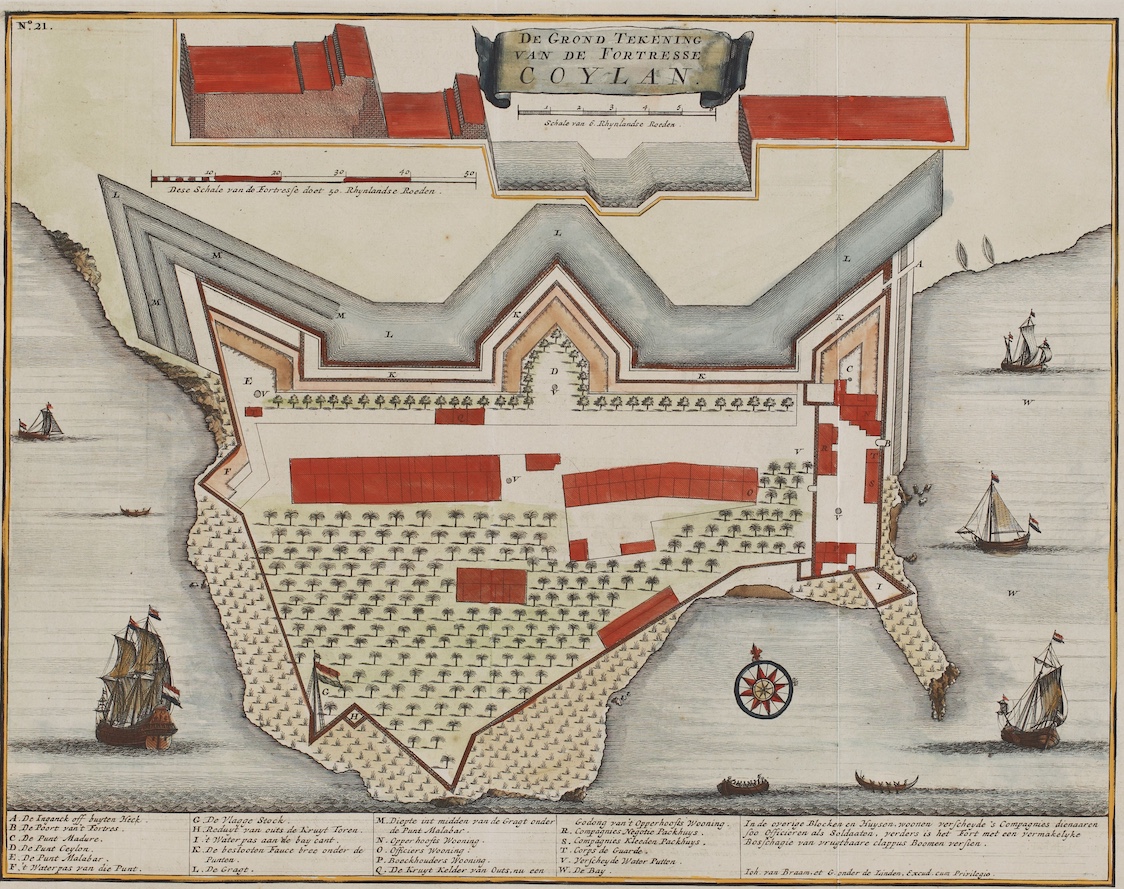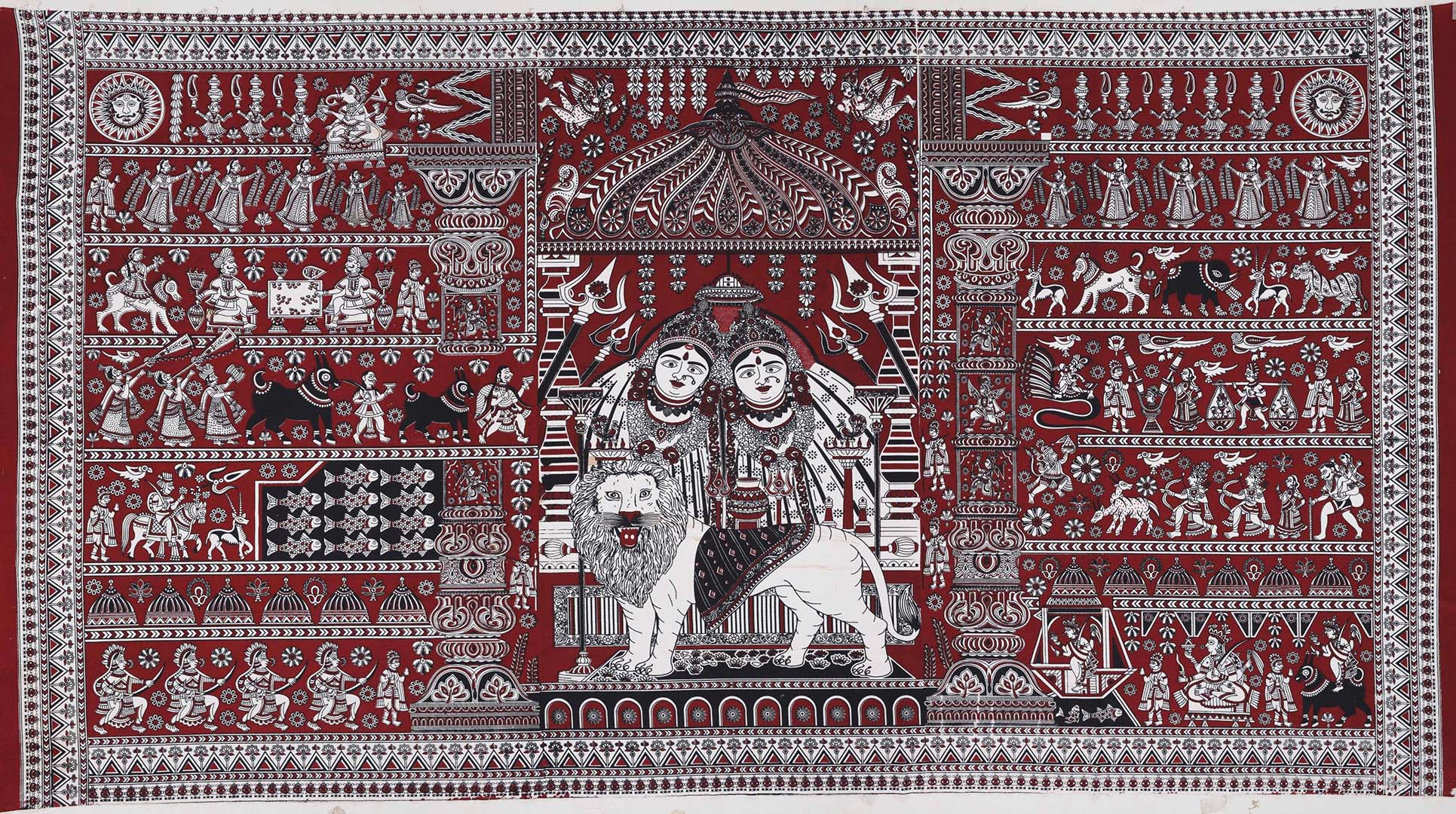
Chamunda Mata, textile painting in the Mata-ni-Pachedi tradition © Sarmaya Arts Foundation (2017.29.1)
The second most common Indian surname in the world is inspired by the king of beasts. According to the genealogy website Forebears, over 35 million people share the last name ‘Singh’, which comes from the Sanskrit ‘simha’ for ‘lion’. In contrast, the territory of the Asiatic lion itself has shrunk dramatically in the last hundred years or so. The only population still thriving in the wild are found in the state of Gujarat.

Over 700 years later, the lion still roars on Indian coins: (left) Coin issued by the Chouhans of Ranthambore, 1275 CE © Sarmaya Arts Foundation (2015.N.114.2); (right) Lion Capital of Ashoka on a ₹2 coin, 2019
In our imaginations, however, the lion roams far and wide. It leaps out at us from mythology, folklore and architecture, its mane framing a face both fearsome and wise. Take our quiz to learn something new about the real Sher Khan.
Results
Congratulations, you are the king of beasts!

Sorry about the score, let’s hear you roar!
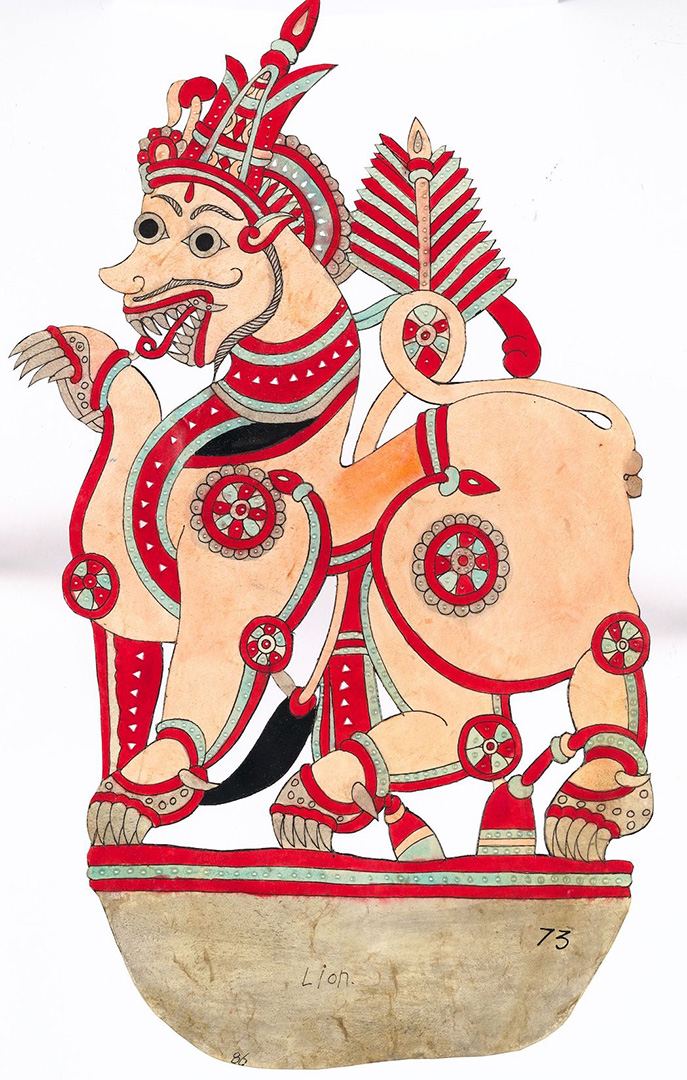
#1. The Asiatic lion of India belongs to a sub-species of Panthera leo. Which one is endemic to India?
India is home to Panthera leo persica aka the Persian lion, believed to have descended from the Sub-Saharan African lion. It is said to have once roamed ‘from Palestine to Palamau’, as Divyabhanusinh Chavda puts it in his book The Story of Asia’s Lions. Today, the Asiatic lion is protected as an endangered species in the forests of Gujarat.
Image: Lion, 2021-2022, Sindhe Chithambara Rao © Sarmaya Arts Foundation (2022.2.73)
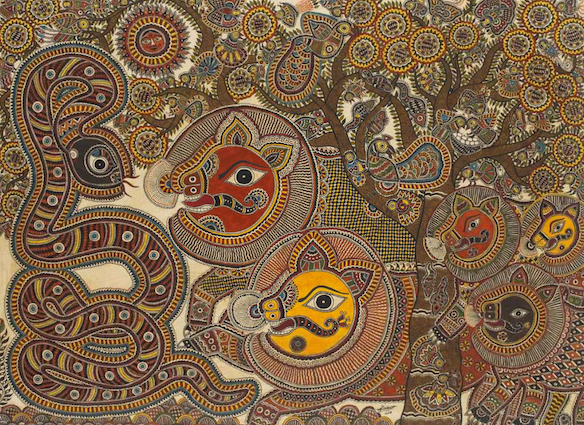
#2. This wildlife sanctuary in Gujarat is home to the last surviving population of Asiatic lions in the world.
Established in 1965, Gir National Park is best known for its successful lion conservation program. The population has risen from around 20 lions in 1913 to 600 today. The Asiatic lion’s domain is the arid forest that covers the hill ranges of Gir and Girnar, although it is now venturing further into other forests like Barda as its numbers grow.
Image: Lion and the Snake, 2018, Jyoti Karn, natural pigments on handmade paper, © Sarmaya Arts Foundation. (2018.35.1)
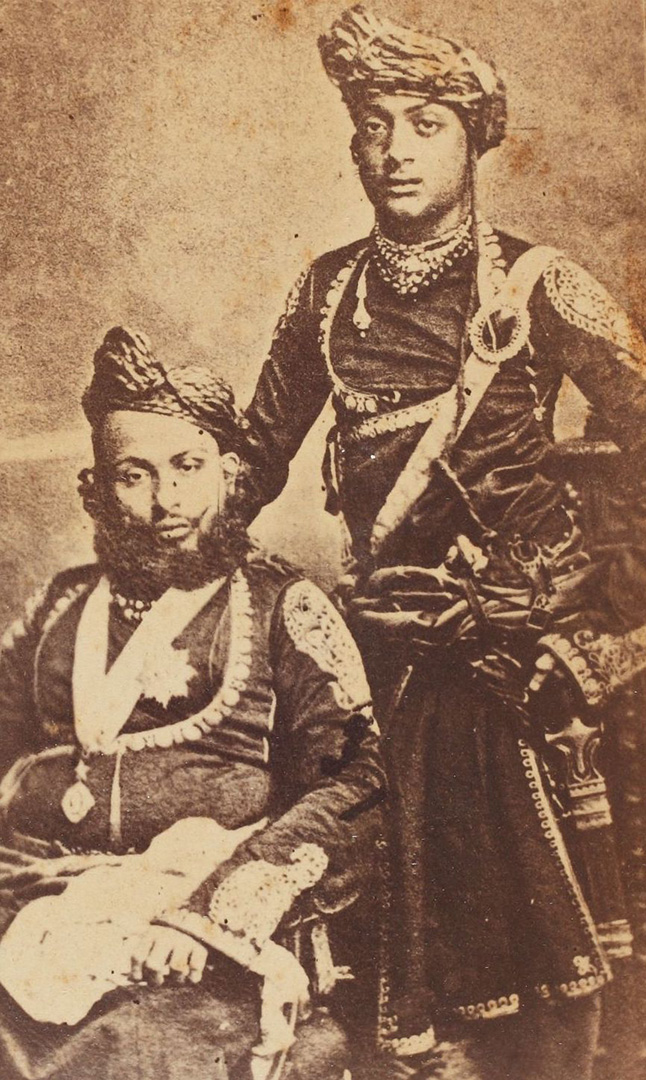
#3. The ruler of which princely state created a wildlife sanctuary to protect the Asiatic lion?
In 1879, Mahbatkhanji II, the Nawab of Junagadh, banned the hunting or trapping of lions in his kingdom without permission from the State. His successors continued to support the cause, and the lion became part of the royal emblem of the Babi Nawabs. The last Nawab Mahabat Khanji III (1911-1948) began the conservation effort that would later turn Gir National Park into the bastion of the Asiatic lion.
Image: Mahabat Khanji III, Nawab of Junagadh with (possibly his son) Bahadur Khan, Bourne and Shepherd © Sarmaya Arts Foundation 2017.16.5 (3)
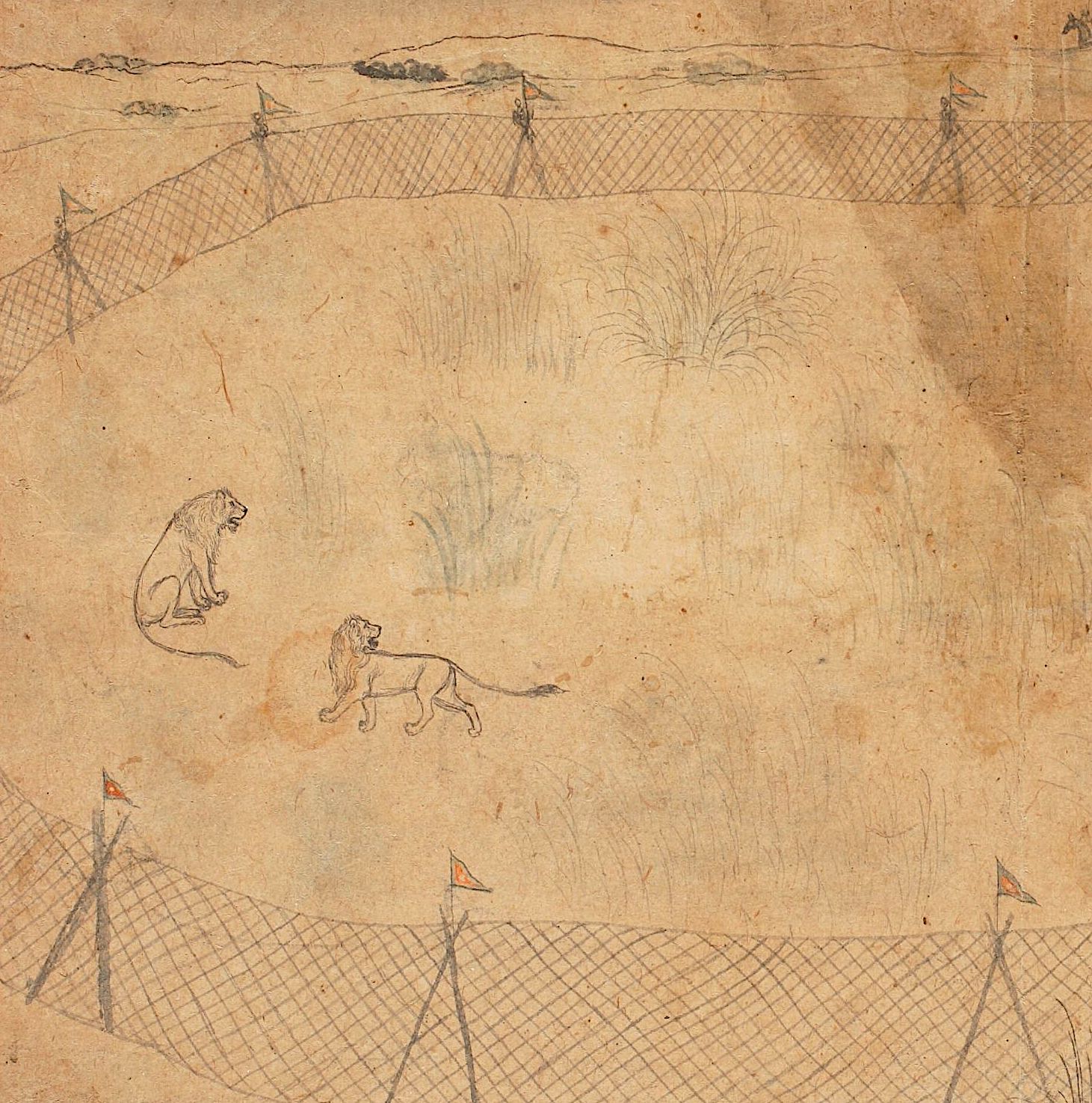
#4. The hunting of lions has been a popular sport among kings since the time of the Ancient Egyptians. On the Indian subcontinent, royal hunting trips or ‘shikaar’ inspired its own form of art, like this painting. Can you identity which school of Indian miniatures it belongs to?
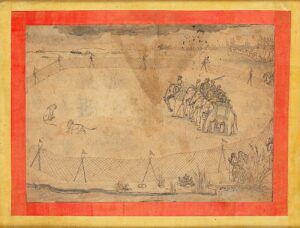
Scenes of royal hunts, aka ‘shikargah’, comprised a popular sub-genre of the Mughal miniature painting tradition. This work depicts a form of enclosed hunting favoured by the emperors and known as ‘qamargah’ or ring hunt. Artists of the Mughal ateliers were masters of naturalism, documenting many species of indigenous flora and fauna.
Image: ‘A Lion Hunt, Mughal, India’, 18th century, brush drawing with green washes on handmade paper © Sarmaya Arts Foundation(2018.8.2)
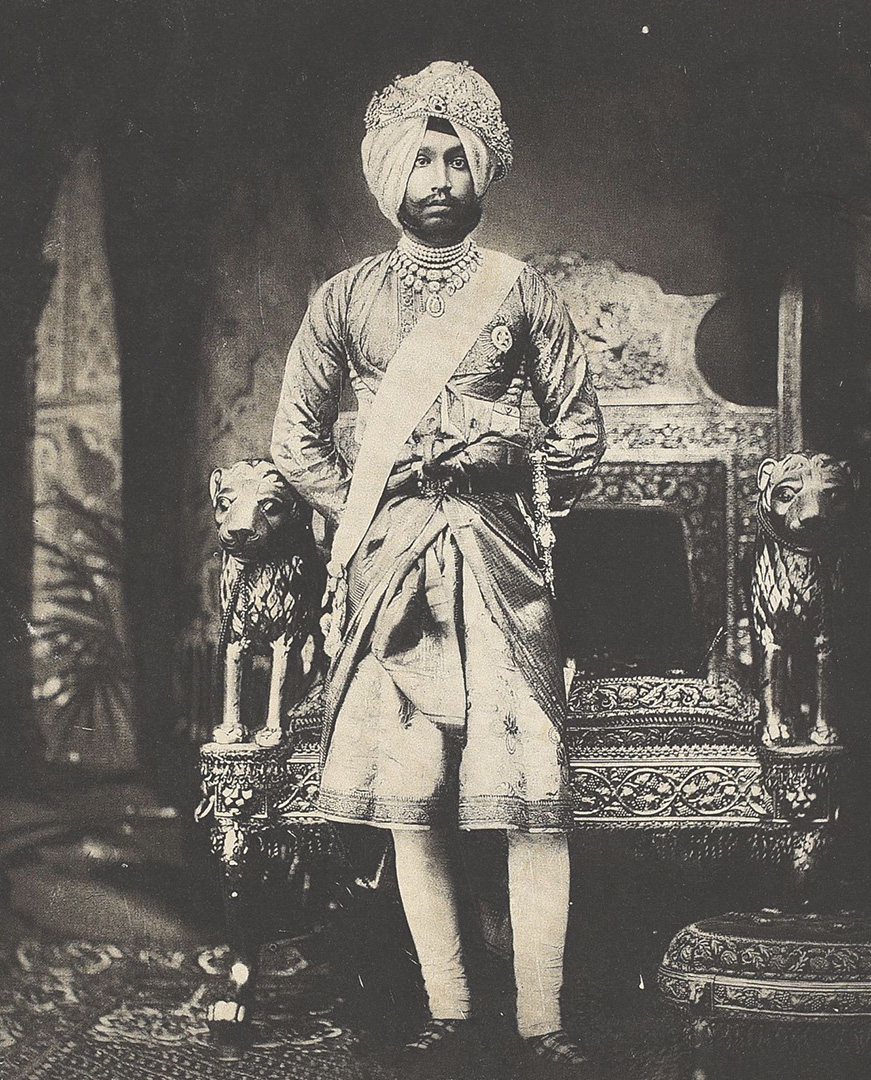
#5. To show their dominance over this apex predator, Indian rulers had lion heads carved into their thrones. What is a popular Sanskrit word for throne that translates to ‘lion seat’?
Simhasana (Sanskrit) or singhasan (Hindi) means the ‘lion seat’, which is a synonym for ‘throne’. The two lions we see carved into the throne, in this photo, are believed to be the royal heralds of the Maharajas of Patiala. They are the inspiration behind the roaring lion on the logo of the cricket team, the Punjab Kings.
Image: Maharaja Bhupinder Singh of Patiala © Sarmaya Arts Foundation 2018.41.68
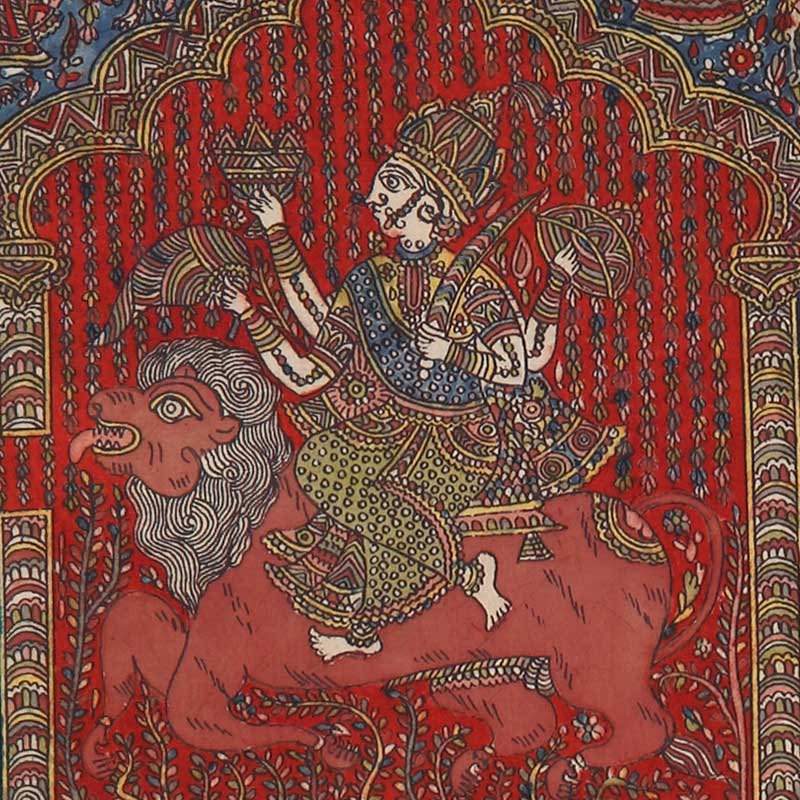
#6. Goddess Durga’s vahana is a big cat sometimes visualised as a lion, sometimes a tiger. What is the name of this sacred mount?
In Hindu mythology, when Goddess Durga rode into battle to save the world against the demon-king Mahishasura, she did it on a beast called Dawon. In paintings, Dawon is sometimes shown trampling evil under his mighty paws. One of the goddess’s many names is Simhavahini, ‘she who rides a lion’.
Image: Part of a Mata-ni-Pachedi textile painting © Sarmaya Arts Foundation (2018.1.1)
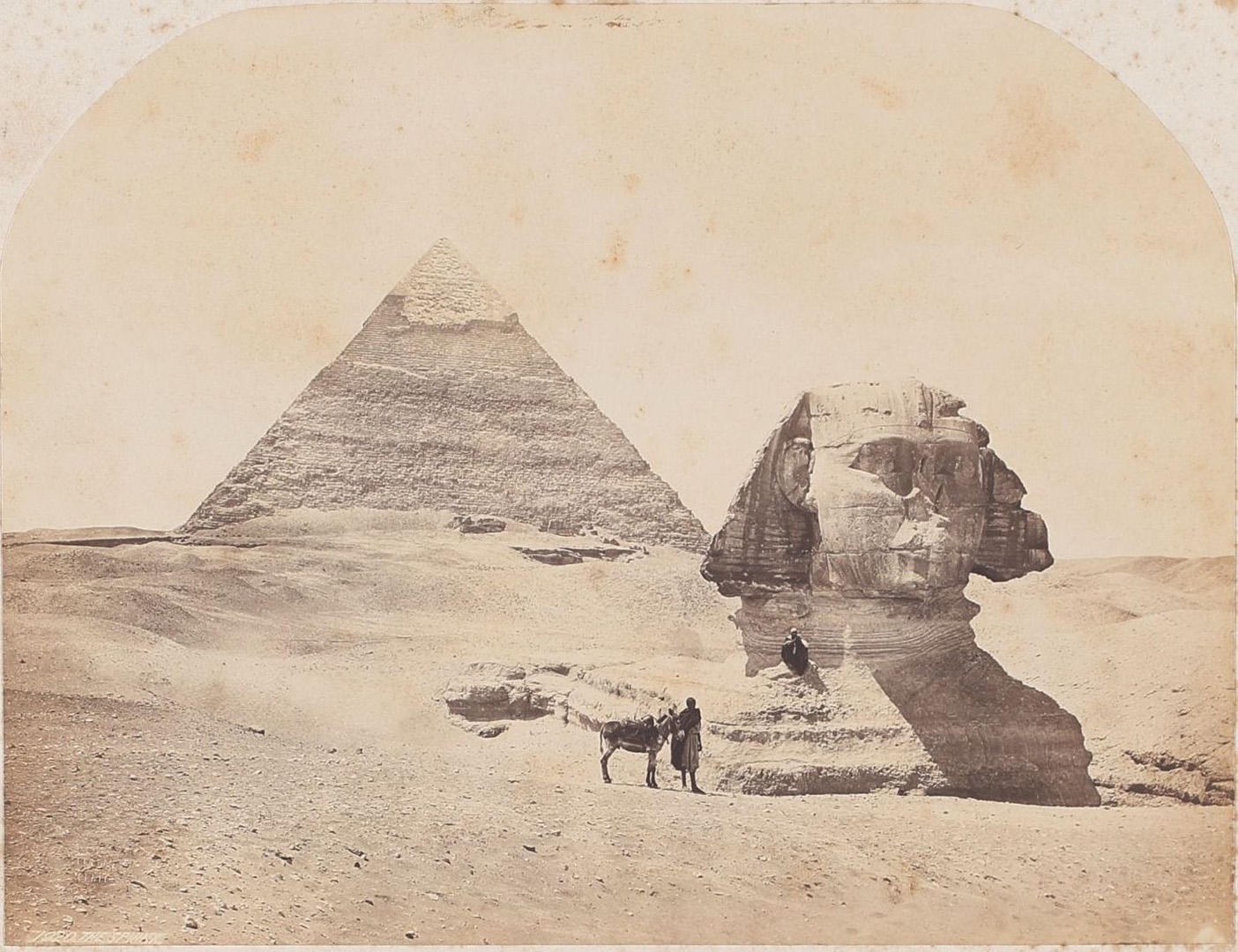
#7. The Sphinx is a creature of Greek mythology with the head of a human, the body of a lion and the wings of an eagle. Where in the modern world will you find this iconic statue of the Great Sphinx of Giza?
Writing of his expedition to Egypt in 1858, Francis Frith described what it was like to process photographs the old-fashioned way in the heat of the Sahara Desert. “With the thermometer at 110° [43° Celsius] in my tent, the collodion actually boiled when poured upon the glass plate.”
Image: The Great Pyramid and the Sphinx of Giza (taken from South-East), 1858, Francis Frith © Sarmaya Arts Foundation 2020.6.2 (1)
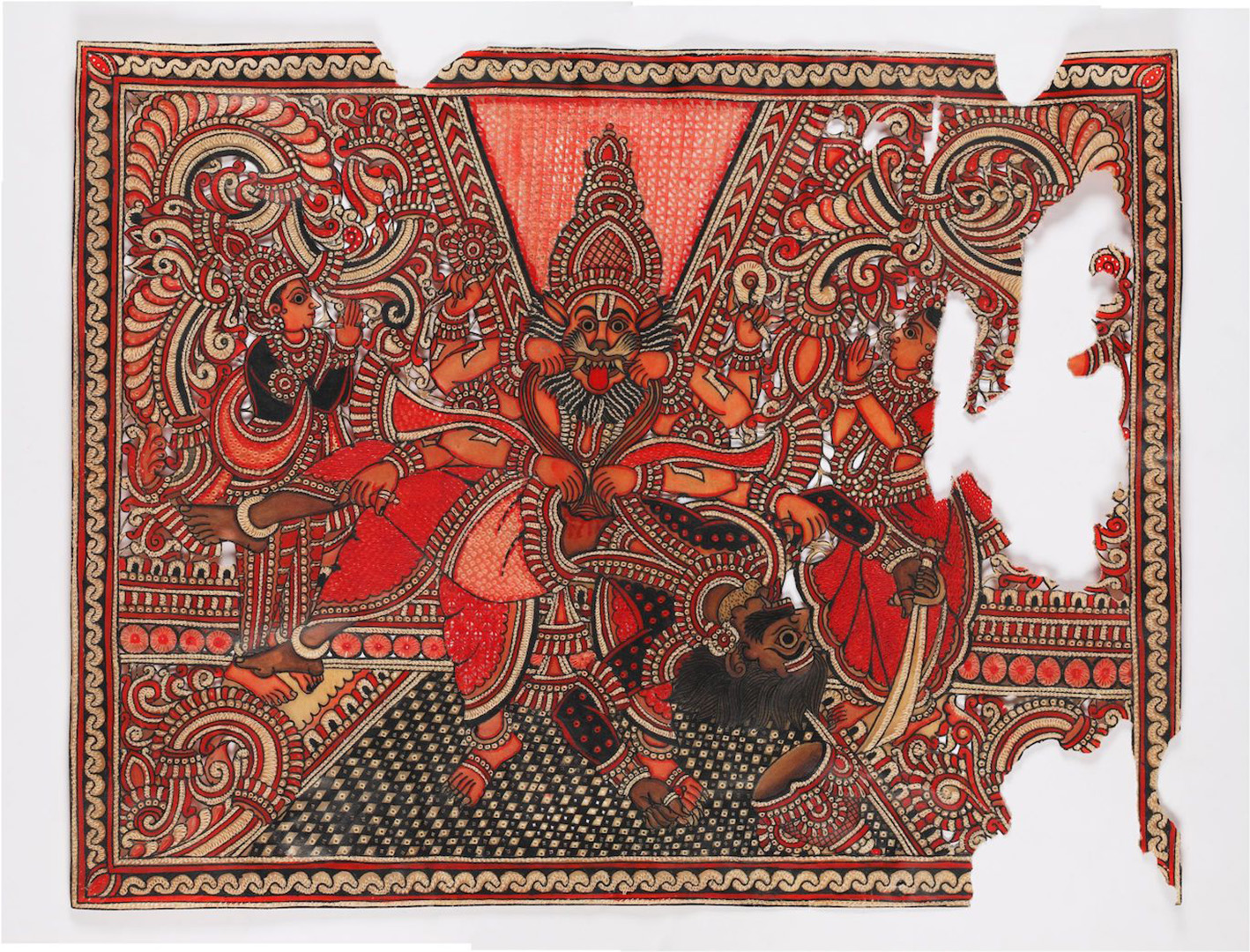
#8. According to Hindu scriptures, Lord Vishnu took on the avatar of a man-lion, Narasimha to slay a powerful asura king—what was his name?
As we see in this vivid tableau capturing the climax of their battle, Lord Narasimha tears into the entrails of the asura king Hiranyakashyapu with his lion-claws. The Puranic legends have it that King Hiranyakashyapu observed the strictest penance to win several boons from the gods that made him almost invincible. One of the boons stated that he could not be killed by any weapon, so Lord Vishnu had to take on the avatar of a lion and use the big cat’s claws to disembowel the rampaging King Hiranyakashyapu.
Image: Narasimha – Hiranyakashipu vadha, watercolours and drawing ink on leather (goat hide) © Sarmaya Arts Foundation 2017.51.47
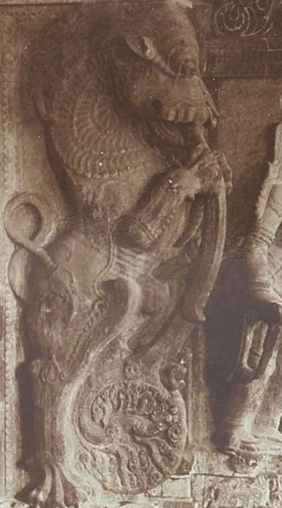
#9. You might have spotted this creature carved into the entrance of old temples. Vyalis or Yalis are mythical creatures, which combine the forms of lion and which other animal?
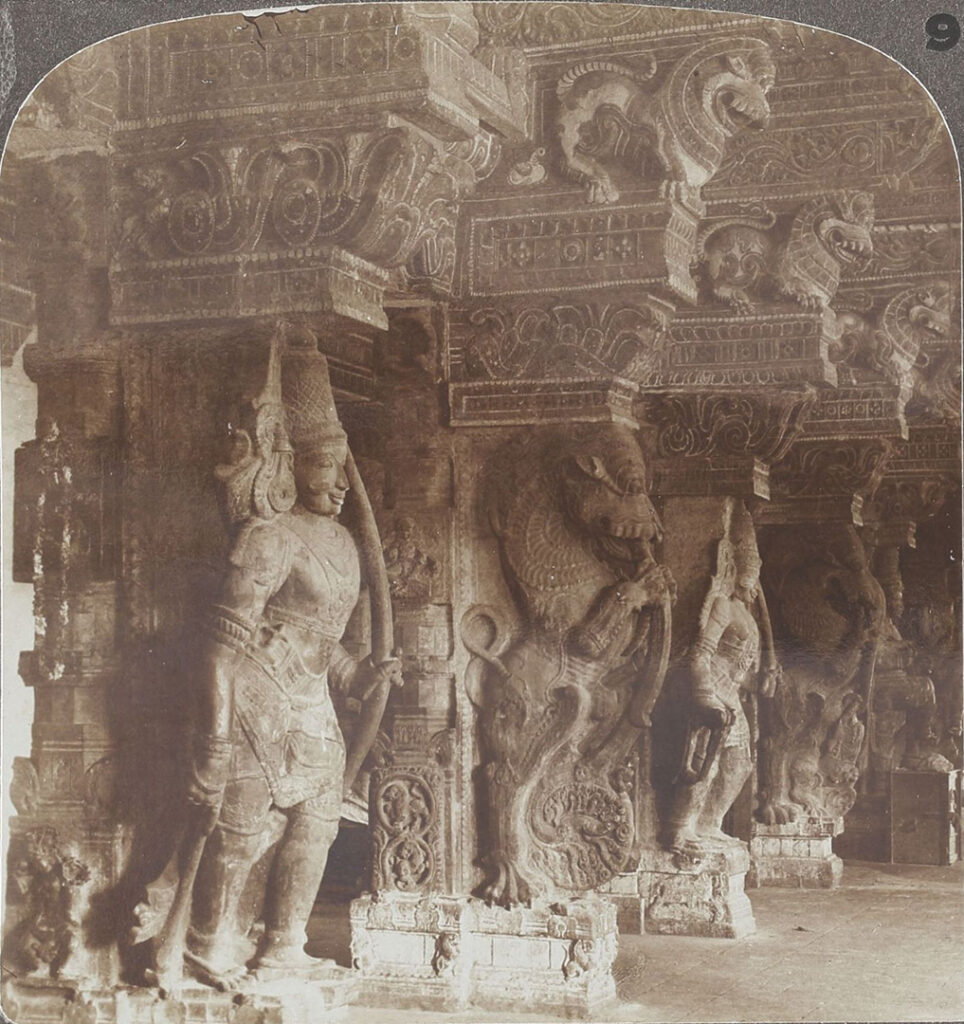
Yalis, Vyalis or Vyalas typically have the face of a lion and the tusks of an elephant. These creatures of Hindu mythology are often found represented at doorways because they’re believed to be guardians. One of the most photographed sites in Madurai’s Meenakshi Temple is the ‘Hall of 1000 pillars’ or the Meenakshi Nayakkar Mandapam, which is lined with stone pillars carved with the fierce visage of the Yali.
Image: Arulmigu Meenakshi Sundaraswarar Temple, Madurai, 1900s, silver gelatin print mounted on a stereo card, Underwood and Underwood © Sarmaya Arts Foundation 2017.15.1 (99)
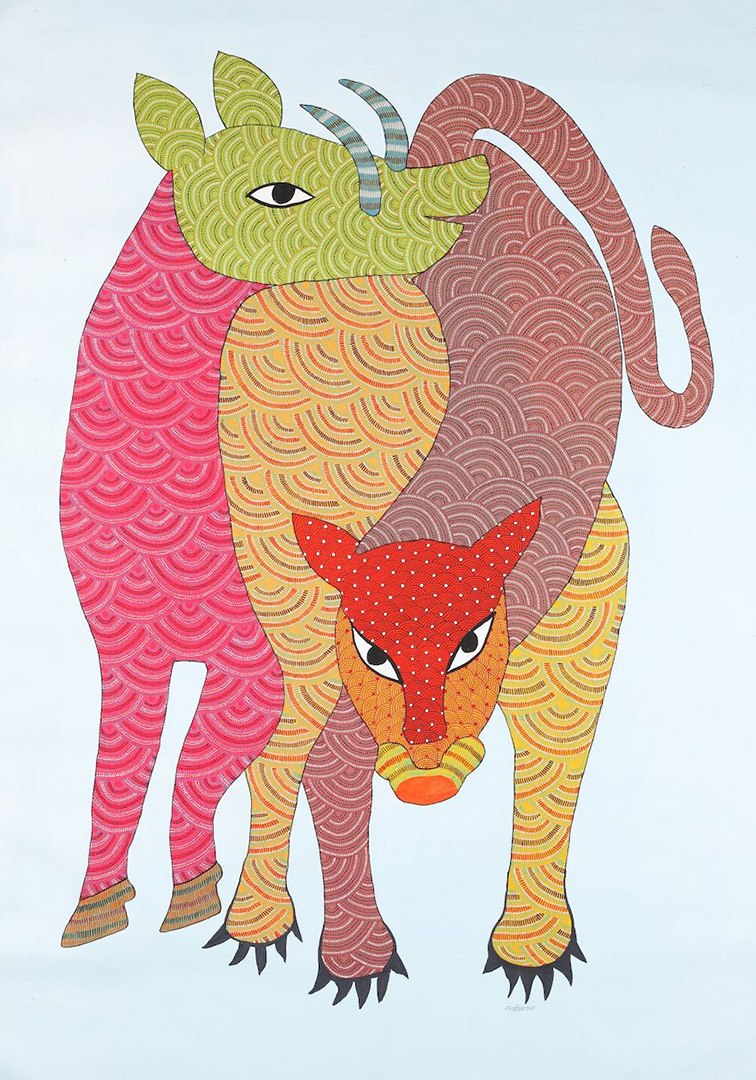
#10. Lions are part of the mythology of adivasi cultures too. This painting narrates one such folktale. Can you identify this Indian art form?
This painting by Nankusiya Shyam narrates ‘Sher-Suar ki kahaani’, the story of the lion and boar, part of the oral tradition of the Gond-Pardhans of Madhya Pradesh. The story goes: The lion and the boar were the best of friends and lived together in the forest with their families. But one evening, when the two returned home, the boar’s piglets complained that the lion’s cubs would attack them when their mothers left. The boar takes her family and moves away, leaving the lion to sing forlornly. “Come back, come back my friend, why are you distressed just because our children quarrel?”.
Nankusiya and her husband and renowned artist Jangarh Singh Shyam would sing the lion’s song to each other. Jangarh’s untimely death makes this story a treasured, valuable memory.
Image: Untitled (Sher aur Suar ki Kahani), acrylic on canvas, 2018-2019, Nankusiya Shyam © Sarmaya Arta Foundation






